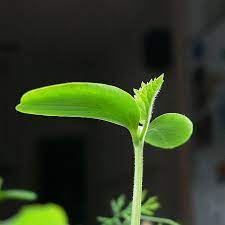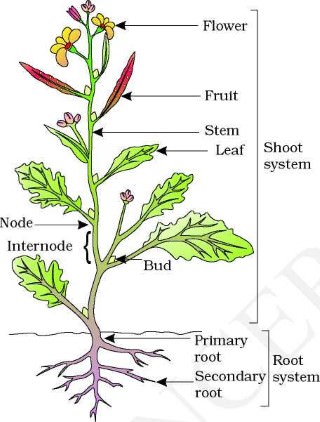DIFFERENCE BETWEEN SHOOT AND STEM
In this article shoot and stem refers to plant shoot and plant stem.
Over view
When a seed germinates and grow to develops as a plant, the shoot area of a plant is the part that grows above the ground. The root part of the plant is the part that mainly develops under the ground.
Shoots consists of any plant stem together with its appendages, leaves, lateral buds, flowering stems, and flower buds.
“Shoots” generally refers to new fresh plant growth including both stems and other structures like leaves or flowers. In most plants stems are located above the soil surface but some plants have underground stems.
Therefore, it is clear that the term “stem” which is often synonymous to the term “shoot” is a very important and critical part of shoots, as it provides an axis for fruits, leaves and buds.

What is shoot?
- Botanically, a plant shoot consists of any plant stem together with its appendages, leaves, lateral buds, flowering stems, and flower buds.
- Shoot is upward growth resulting from seed germination where leaves will develop.
- In the spring, perennial plant shoots are the new growth that grows from the ground in herbaceous plants or the new stem or flower growth that grows on woody plants.
- Many woody plants have distinct short and long shoots. The short shoots (also called as spur shoots or fruit spurs), produce the majority of flowers and fruit. A similar pattern occurs in some conifers.

What is stem?
- A vascular plant consists of two main structural axes, i.e., stem and root.
- Stems, which are an integral component of shoots, provide an axis for buds, fruits, and leaves.
- It supports leaves, flowers and fruits, transports water and dissolved substances between the roots and the shoots in the xylem and phloem, stores nutrients.
- The stem is normally divided into nodes and internodes. The nodes hold one or more leaves, as well as buds which can grow into branches (with leaves, conifer cones, or flowers). Adventitious roots may also be produced from the nodes. The internodes distance one node from another.
- Stems have two pipe-like tissues called xylem and phloem. Xylem transports water and mineral salts from the roots up to other parts of the plant, while phloem transports sucrose and amino acids from the leaves to other parts of the plant.
- Stems are often specialized for storage, asexual reproduction, protection, or photosynthesis.